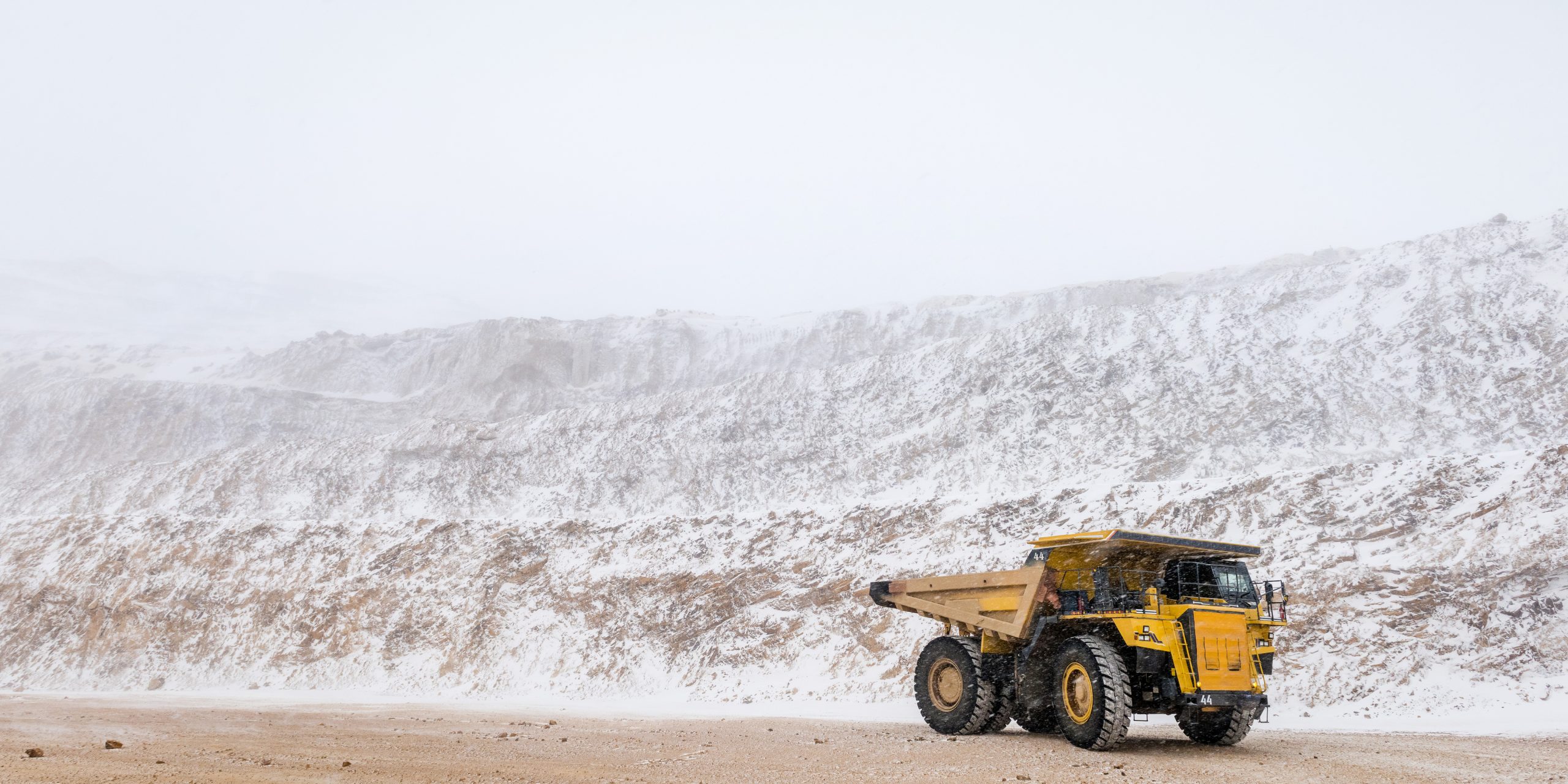The global mining industry faces complex challenges; climate change pressure, environmental issues, trade wars, geopolitics, demand fluctuation, technology changes, a shortage of skilled workers and more. Addressing and/or mitigating these challenges is a priority for the long-term sustainability of mining. At the same time, there are a number of trends that drive the future of this industry. The following are some of the challenges and key trends that impact the mining industry.
Challenges in the global mining industry:
- Climate and environmental pressures: The mining industry is a significant contributor to global greenhouse gas emissions. There is increasing pressure for the industry to decarbonize its operations and adopt greener technology in its supply chain. Water usage is a challenge, as this already scarce resource is heavily used in the mining process. Mining companies that can demonstrate their contribution to a sustainable future will have a competitive advantage. To stay competitive, mining companies must address climate, and environmental challenges in their corporate strategies, reporting and high-level decision-making.
- Social issues: Shareholders/stakeholders are increasingly focused on the social and community impact of mining. There is a move to ensure that communities are treated fairly and with respect, particularly in remote mining sites. There is a push to ensure that mining companies leave a lasting positive legacy when mining operations cease. To stay competitive, companies must address these social challenges.
- Health and safety: Mining is a risky business for on-the-ground employees. They’re faced with airborne hazards, ground instability, water accumulation, dust inhalation, hearing damage, whole-body vibration, over-exposure to UV radiation, harmful chemical exposure, thermal/heat stress and more. Mining companies are called to solve/mitigate the likelihood of these risks. Possible solutions include digitalization and connectivity (using smartphones/wearables, geo-location tools, etc.).
- Geopolitics: Relations between the West and China, the war in Ukraine, European Union instability, the politics of natural resource access/management, global trade conflicts and political instability directly and/or indirectly affect the mining sector. These issues result in supply chain risks (raw materials, spare parts, technology) and increased costs. Mining companies need to be proactive in dealing with geopolitical issues, employing a multifaceted approach that actively engages with suppliers, governments and trade bodies to ensure that the long-term supply chain is sufficiently robust.
- Demand insecurity: As the transition from nonrenewable to renewable energy evolves, demand for specific commodities is changing. Mining companies need to be aware of the possibility of substitution on long lead projects. They need to build a flexible business that can handle fluctuations from unstable prices, uncertain demands and the possibility of product substitution. They must optimize their risk by using scenario modelling to predict the impact on demands. It’s wise to implement offtake agreements (an agreement to purchase all or a substantial part of the output or product produced by a project) to deal with the likelihood of price volatility.
- Skills shortage: There is a talent shortage in the global mining industry, sparking production cuts and shipment delays. The challenge is attracting and retaining employees in a sector that is unattractive to younger generations, is perceived as damaging to the environment and requires dirty/hard physical labour. Mining companies must focus on an inclusive culture with solid career paths open to everyone. They need to improve working conditions, benefits, culture and the opportunity for remote work/training.
- Commodities markets are evolving, a consequence of both changing demand and the advent of digitalization. Mining companies need to adapt quickly or face being left behind. They can create value by using their knowledge of demand and supply dynamics. It’s wise to rely on digital and online platforms in markets that are highly competitive and transparent, focusing your efforts on differentiating your company from the competition by providing a superior customer experience (ie: one-click ordering platforms, automating approvals/information flows) and creating strong relationships with upstream suppliers.
- Stringent regulations around drilling, licensing, environmental safety, operational practices and worker safety increase the time, cost and effort needed for compliance. Legal expenses, penalties and damage to reputation when in violation of rules and guidelines are a concern.
Trends in the global mining industry:
- Digitalization is an effective way to minimize set-up time, reduce labour and equipment costs, improve response times, reduce downtime and mitigate health and safety risks. As commodities markets evolve, embracing digitalization enables mining companies to enhance competitiveness by streamlining operations and finding new sources of value.
- Safety first: Health and safety are rapidly becoming a priority. Digitization and connectivity promote greater safety (geo-location tools, smartphones, wearables), removing people from hazardous areas. Digital and automation solutions protect personnel from harm and make conditions safer and more amenable.
- Collaboration: An increasing recognition that sustainability and productivity goals cannot be achieved alone is leading to collaboration across the supply chain. Alliances of key technical suppliers and OEMs (quality contract manufacturers) are developing evolving solutions that offer value for all. For example, a collaborative global initiative is calling for technology innovators to develop concepts for large-scale haul truck electrification systems that will help the mining industry reduce its consumption of diesel fuel and significantly cut harmful emissions from surface mine operations while a collective of mining companies is working to decarbonize heavy haulage.
- Decarbonization: The mining industry is responsible for approximately 4 to 7% of greenhouse gas emissions. In a recent report, mining companies ranked environmental and social issues as their number one risk. Miners are aware of the need for decarbonization. Integrated electrification and digital solutions are being considered/developed. Everyone from Tier 1 multinational mining companies to vendors and OEMs are committed to making this happen.
- Automation is a prominent trend in mining. Mining companies are focused on moving toward autonomous mining systems that can perform tasks automatically or with minimal intervention from external forces and fully automated robotics. Automated technology enables companies to work around the clock, maximize input use and increase productivity. Automated equipment means fewer workers are exposed to hazardous materials as processes can be controlled/interacted with remotely. Common types of automation include trucks, site monitoring, drilling systems, ventilation systems, drones (mapping, surveying, measurement) and long-distance trains.
- Artificial intelligence: enables mining companies to achieve economic benefits. They use smart data and machine learning to improve mining production, reduce costs, increase efficiency, enhance safety, locate deposits, reduce environmental impact, enhance reliability and improve decision-making. Real-time data/analytics helps operators take measures to prevent accidents and can be utilized for predictive maintenance purposes. AI technology’s machine learning capabilities are heavily influencing how mines make decisions for the future.
- Jurisdictions: Investment decisions are often based on the pure mineral potential of a jurisdiction but a sound regulatory regime and competitive taxes make a jurisdiction attractive to investors. There is a trend toward investment in the top global jurisdictions (Australia, Nevada, Saskatchewan).
- Net zero plans: There is a move toward switching to renewable energy to power mine operations. Mining companies are seeking reliable partners to support the costly renewable energy that will play a critical role in their net-zero plans. Investors, governments and customers are pushing for plans for net zero emissions by 2050.
Like most industries, mining is facing significant changes and challenges which means mining businesses have to balance the risks and costs to stay ahead of their competitors. Challenges require that mining companies be agile, ready for change and continuously strive for excellence in all parts of the mining operations. Current trends generally relate to meeting these challenges in innovative ways.
Interested in mining activities and investment opportunities? Need more information? Check out Junior Mining Hub. We’re a rapidly growing, open-access platform highlighting industry events and activities throughout the junior mining sector. Our categorized, searchable information provides a cohesive industry picture. We use our years of industry experience to promote mining activities and investment opportunities to the global community. Contact us today or sign up for our daily email and/or our weekly newsletter.

